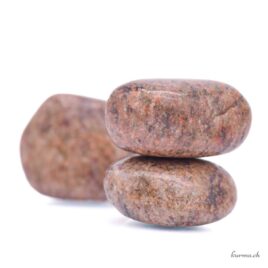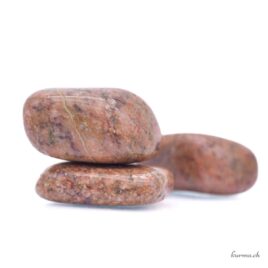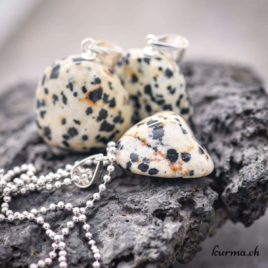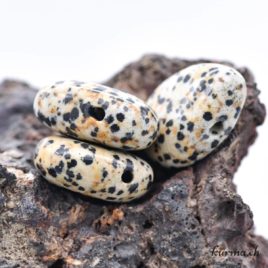Aplite
gemstones, pendants, rolled stones
Aplite, an intrusive, fine-grained igneous stone, is composed mainly of Quartz and alkaline Feldspar.
The refined crystalline structure of this stone, uncommon in lithotherapy, links it to the regulation of balance and protection.
What are the virtues and benefits of Aplite in lithotherapy?
Symbols and properties
Its identification is fairly recent, dating back to the early 19th century by the German mineralogist and geologist Karl Cäsar von Leonhard. It is therefore not linked to myths and beliefs rooted in ancient cultures - its spiritual powers and ritual uses stem from the modern practice of lithotherapy.
Lithotherapy meanings
Modern energetic approaches associate this stone with virtues linked to clarity of mind and stimulating the imagination, regulating energies and protection.
Acting as a talisman, its fine and simple structure makes it act as an energy filter, blocking harmful influences from a toxic environment. In this sense, it would be particularly useful for preventing and guarding against a bad encounter when traveling to an unfamiliar place.
Its emotional and mental benefits will reinforce courage and honest vision, as well as an understanding of all the challenges for the future that require assurance and long-term lucidity.
This support for the ability to make the right decisions also applies to mental clarity and the imagination: in lithotherapy, its action on creativity will promote a lucidity on analogical powers and symbols, which could be very useful for intellectual or artistic work.
In meditation and self-inquiry
In meditation or chakra work, Aplite's spiritual virtues can help channel subtle energies.
Its power to harmonize the body's energy flows can help, through its stability and anchoring properties, to connect us to forces as unfathomable as they are structuring, while its use allows the power of mystery to transform us or help us acquire a new vision through questioning.
Physical benefits
The physical effects of Aplite are not validated by science and are rather based on modern esoteric beliefs, linked to crystallography and the principles of vibratory resonance.
According to oral traditions and energetic practices, this stone is reputed to help balance adolescent hormonal disorders and to stimulate cognitive abilities during periods of stress and mental overload.
It may also soothe overly tormented sexual tensions, bringing balance to the apprehension of desires and sensuality.
Which crystals to use with Aplite?
In lithotherapy, to amplify its effects, Aplite's symbolic energetic correspondences allow it to be combined with complementary stones, depending on your intentions:
- Amethyst, linked to the imagination and favoring intuition, can clarify the mind and stimulate creativity.
- the combination with Labradorite, a stone of light can provide additional emotional protection by absorbing negative energies and calming them.
- Schorl or Black Tourmaline will reinforce protection and the balancing forces of Aplite.
Aplite purification
Reloading / cleaning
Sun/moon exposure, running water, fumigation, wind/breath, intention, singing bowl, form wavesAstrological signs
Taurus, Virgo, Capricornstructure and nature stable
Chakras
Root chakra (Muladhara)safety, stability
Crown chakra (Sahasrara)
mental clarity, spiritual connection
Elements
Earthdepth and anchoring
Aplite mineralogy
Its name, derived from the Greek haploos, meaning "simple", refers to its purified mineral composition.
Often associated with granites and pegmatites, aplite is a magmatic (by origin), igneous (by solidification), intrusive (formed below the surface), very fine-grained rock. It consists mainly of quartz and alkali feldspar (orthoclase, microcline, sometimes plagioclase), formed in the final crystallization phases of granitic magmas. It may contain accessory minerals such as Muscovite, Biotite, Topaz, Fluorite, Garnet or Tourmaline.
It is said to have an equigranular texture (its crystals are all of similar size, with slow and stable cooling giving it a homogeneous appearance) and saccharoid (referring to its appearance and shine of crystallized sugar).
It is found in North America, northern Europe, Asia and South Africa.
Its hardness on the Mohs scale is 6.5 - which places it in the hard rock category. It is, however, slightly less hard than quartz.
Reproduction in whole or in part of this content is prohibited. More info





